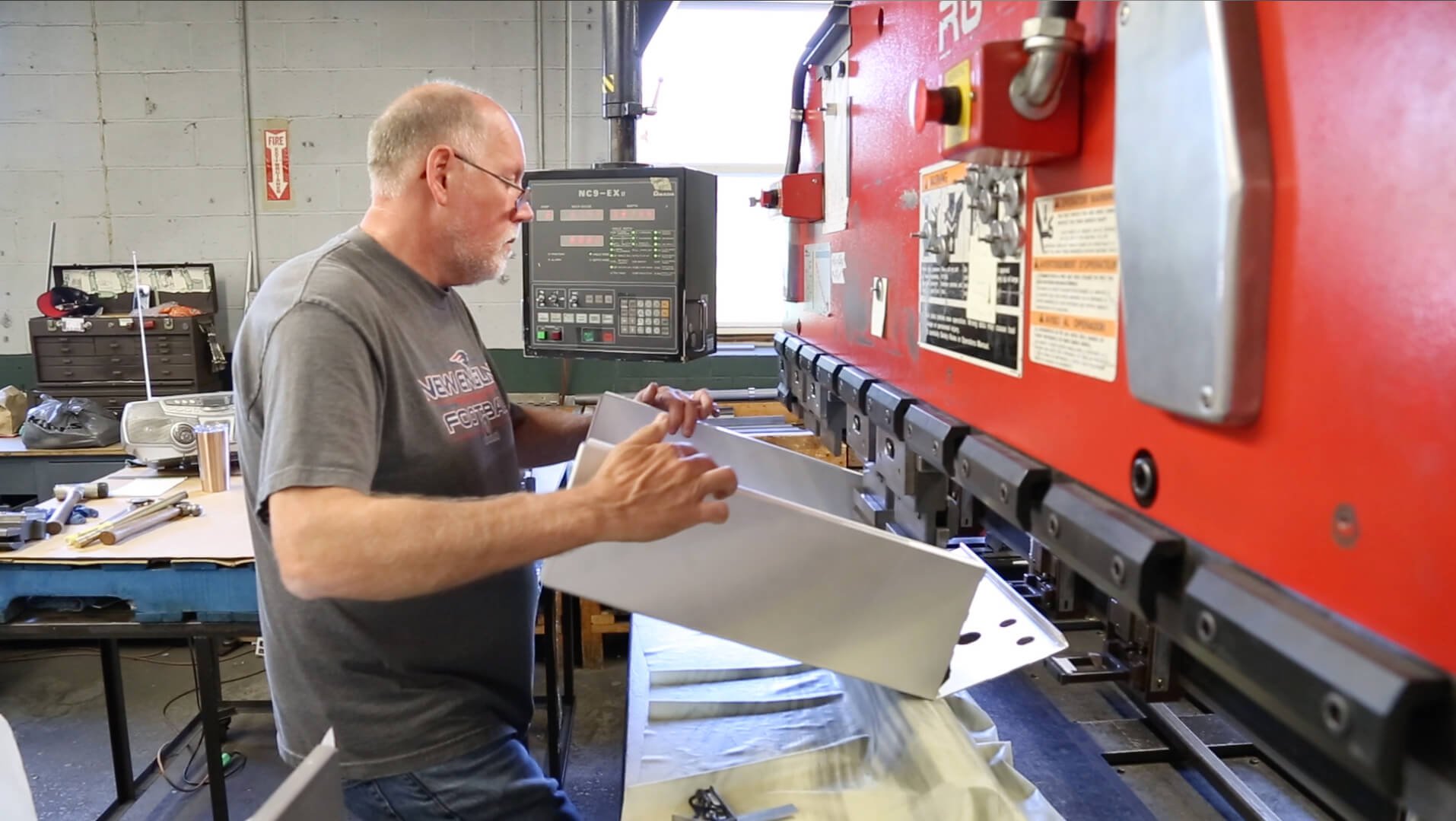Sheet Metal Fabrication vs. CNC Machining
Sheet metal fabrication involves manufacturing parts out of metal. CNC machining involves manufacturing parts out of metal. So aren’t sheet metal fabrication and CNC machining the same thing?
Not at all!
We hear this question quite often, and we’re here to explain the differences between sheet metal fabrication and CNC machining—and why we offer both manufacturing services at Sweeney Metal Fabricators.
Your Full-Service Shop for Sheet Metal Fabrication and CNC Machining
Despite what our name may suggest, Sweeney Metal Fabricators offers more than metal fabrication services. We’re a full-service ITAR and ISO-certified shop, meaning we’re expertly equipped to meet a wide array of manufacturing needs, including:
All of our manufacturing services fall under two service categories: sheet metal fabrication and CNC machining. Allow us to explain the differences between these two manufacturing divisions to help you understand which services will best suit your next project!
What Is Sheet Metal Fabrication?
The phrase “sheet metal fabrication” refers to a collection of different manufacturing techniques for manipulating sheet metal to create working parts and prototypes.
We primarily work with sheet metals in gauges ranging from 0.006” to 0.25,” with the thinner sheets ideal for high-malleability and the thicker sheets preferred for high-stress applications. If your part design includes flatness or hollow spaces, sheet metal fabrication is typically a much cheaper manufacturing solution than machining—and it produces significantly less waste!
You’ll find us creating parts from metal sheets of aluminum, copper, steel (including stainless and alloy), zinc, and more. Leveraging modern software and precision equipment, our sheet metal shop provides these fabrication processes:
Sheet metal cutting
Laser cutting is the most common means of cutting sheet metal. At Sweeney, we use a LaserCube flatbed production cutter from IPG Photonics to provide high-precision fiber laser cutting and scribing. The energy-efficient LaserCube easily cuts low to medium-gauge sheets of most metals, though certain hard metals are an exception.
“Punching” or “piercing” is another sheet metal cutting method we use at Sweeney to form precise holes in metal.
Sheet metal forming
Sheet metal forming involves the various manufacturing processes used to manipulate metal sheeting without cutting.
Our sheet metal shop floor houses several Amada brakes to bend your sheet metal into various shapes, including channels, U shapes, and V angles. Amada’s Automatic Tool Changer (ATC) capabilities enable us to seamlessly expedite many jobs by tripling or even quadrupling the number of setups we perform daily.
Sheet metal assembly
Sheet metal assembly also includes welding, the process of melting together two metal components. Not all metals are easily welded, but common sheet metals such as aluminum and steel weld easily.
At Sweeney, we offer a few welding solutions, including:
Spot welding. This resistance welding process utilizes pressure and heat from an electric current to weld sheet metal parts together.
TIG welding. Tungsten electrodes and an inert gas work together to create a high-frequency current that heats the metal to a liquid form for assembly.
MIG welding. This type of welding creates an electrical arc between the sheet metal and an electrode wire. As the wire melts, its material is deposited on the metal to form the weld.
What Is CNC Machining?
CNC stands for “computer numerical control” and is the foundation of today’s precision machining processes.
Programmed by a skilled operator, a CNC machine navigates its high-quality cutting tool to the pre-programmed dimensions, cutting away material to make precise parts with tight tolerances and complex features.
At Sweeney Metal Fabricators, we machine parts from a variety of materials—not only metal. You’ll find us working with aluminum, cast metals, steel (including stainless and alloy), tungsten (WHA), plastics, phenolics, and more.
Our precision machine shop uses AutoCAD, Mastercam, SolidWorks, and other top-tier software to provide accurate CNC machining for numerous industries, from aerospace to robotics to medical and beyond.
Capable of milling, boring, drilling, tapping, thread cutting, and more, Sweeney’s top-of-the-line CNC vertical machining centers offer milling and turning processes to remove a workpiece’s material and shape your part.
CNC milling
When performing CNC milling operations, we secure a workpiece to a table that moves and rotates on different planes, giving access to the rotary cutting tool. CNC milling machines achieve different cutting results by employing varying angles, pressure levels, cutting directions, and tool speeds.
CNC turning
CNC turning rotates the workpiece along a central axis while a non-rotary, linearly moving lathe shapes the part’s features. Our turning processes include straight and taper turning, spherical generation, grooving, parting, knurling, and threading. When combined into a single, pre-programmed CNC operation, these machining methods result in astoundingly intricate parts.
Multi-axis CNC machining
Our precision machine shop’s multi-axis CNC vertical machining centers can mill and turn complex shapes and features with minimal setups.
Get Metal Fabrication and CNC Machining at Sweeney Metal Fabricators
In business since 1988, we’re proud to offer top-quality sheet metal fabrication and CNC machining services under one roof, where you’ll always receive personalized attention and service!
Contact us for a custom quote!

